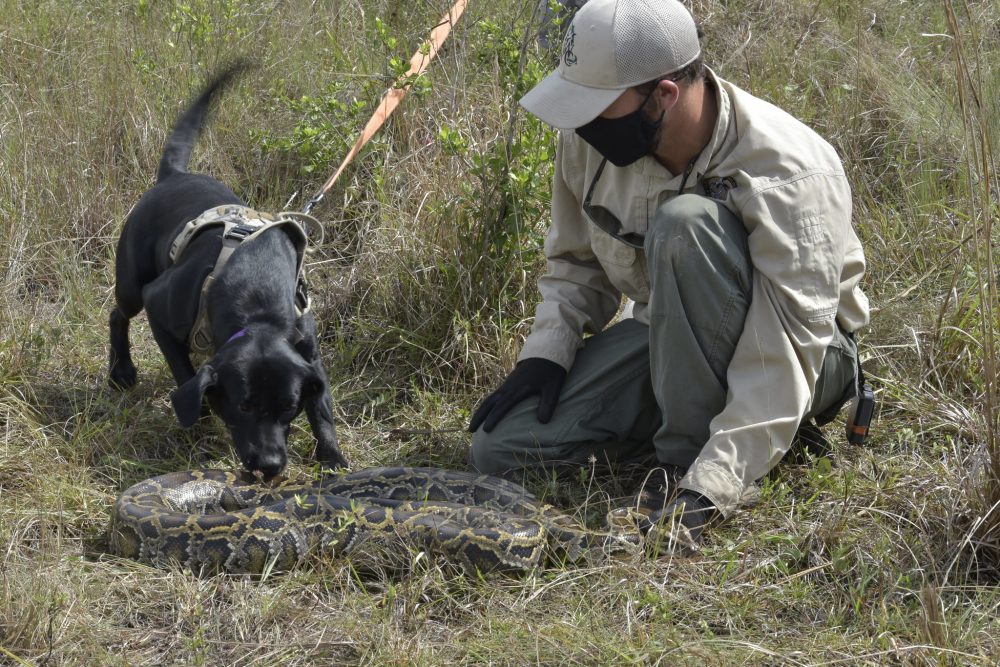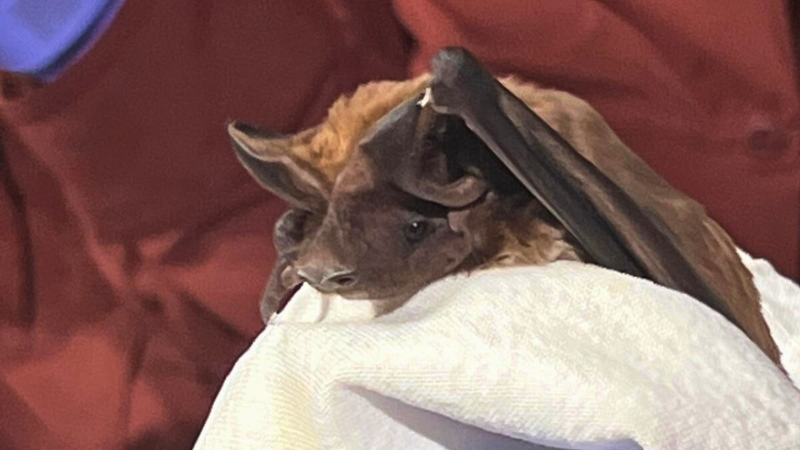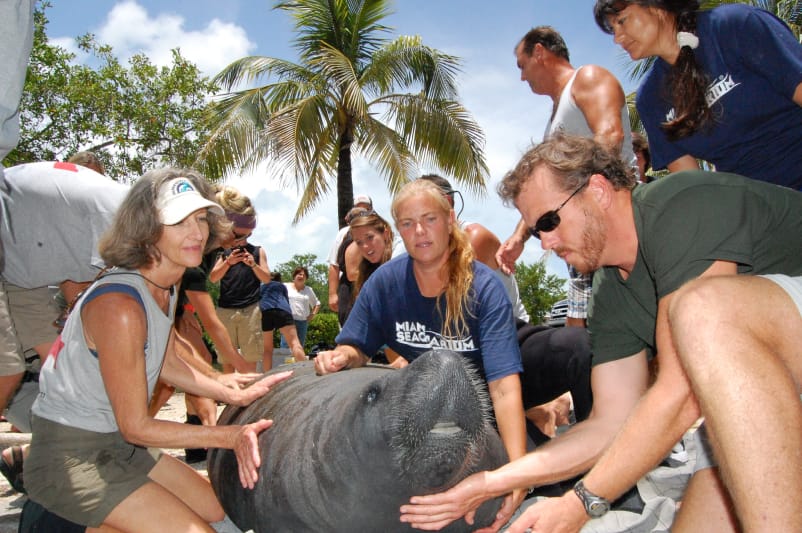
When it comes to invasive species, Florida has its fair share. From cane toads and feral hogs to lionfish and climbing ferns, these non-native species wreak havoc on their surrounding ecosystems. The Burmese python is one of the most destructive invasive species affecting the sunshine state, particularly delicate southern wetlands.
Burmese pythons have a lifespan of over 20 years and can grow up to 23 feet long. Tipping the scales at 200 pounds at maturity, these massive snakes are often released into the wild as pet owners are unable to accommodate their size and eating habits. Although they are non-venomous, Burmese pythons are constrictors capable of eating alligators over six feet long. Pythons are native to Southeast Asia, spending much of their life in the trees of jungles and grassy marshes.
The first Burmese python was found in the Florida Everglades in 1979. After decades of breeding and additional illegal releases, it’s estimated tens of thousands of pythons now roam freely in the cypress swamps and wetlands of the Everglades. Because of their size, pythons have very few predators in Florida with the exception of alligators and humans. Pythons are responsible for killing and eating imperiled mammal species, including the endangered Key Largo woodrat and mangrove fox squirrel. Unfortunately, domestic cats and dogs have fallen prey to the massive misplaced snakes as well.
Locating pythons is difficult. The semi-aquatic reptiles blend in very well with wooded, swampy surroundings due to their coloring. They capture their prey by ambushing them, making them excellent hiders. FWC has combated the species with surveying and removal programs and, most recently, has enlisted the help of two furry python hunters.
Eleanor and Truman, a German Shorthaired Pointer and a black lab respectively, are trained python detection dogs. Accompanied by an FWC biologist and handler, the pups sniff out Burmese pythons across public land in south Florida five days a week.
The dogs spent a month in training, using python-scented towels and live pythons with surgically implanted tracking devices to test their abilities. Eleanor and Truman were trained to ignore live wildlife they may encounter while in the field and worked on increasing their stamina in order to safely cover more ground while working without getting tired.
Public engagement is a crucial piece of the puzzle to reducing the number of nonnative pythons in the wild. Donate to our Foundation’s Combatting Invasive Species fund or purchase a Conserve Wildlife license plate. Funds from these programs have supported our partners such as the Conservancy of Southwest Florida, which uses radio-transmitters to lead biologists to reproductively active female pythons. In just two breeding seasons, they were able to remove 192 adult pythons weighing approximately 7,800 pounds, including 105 female pythons containing over 4,000 developing eggs. If you currently own a python and are no longer able to care for it, consider the Exotic Pet Amnesty Program by FWC. If you happen to see a python in the wild, contact FWC’s Exotic Species Hotline at 888-Ive-Got1.











